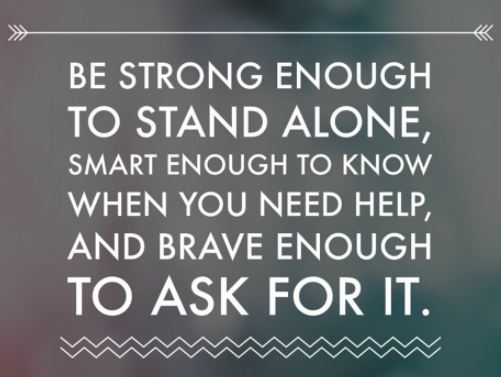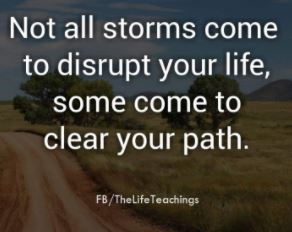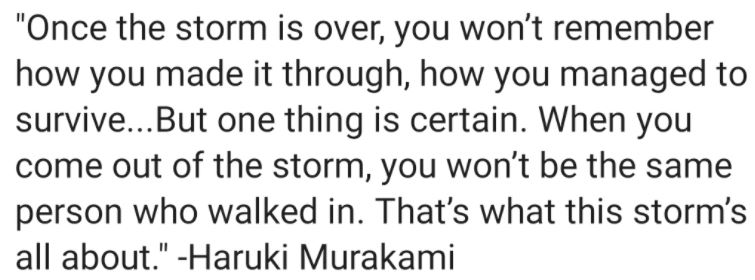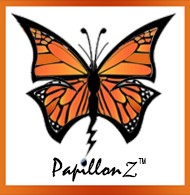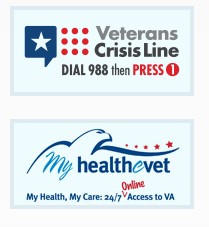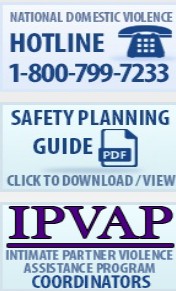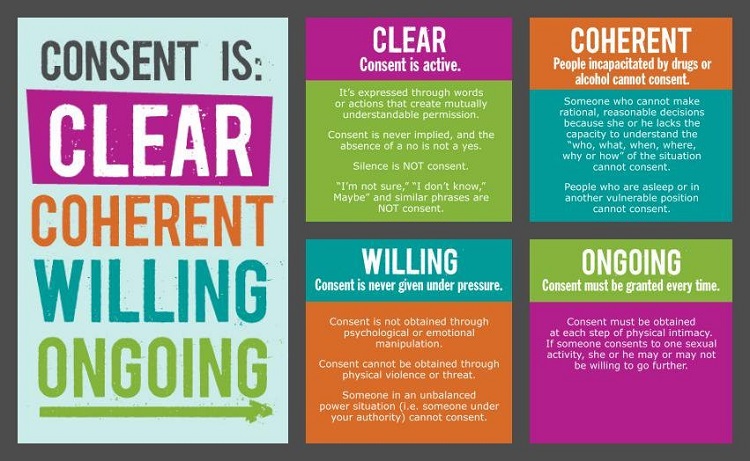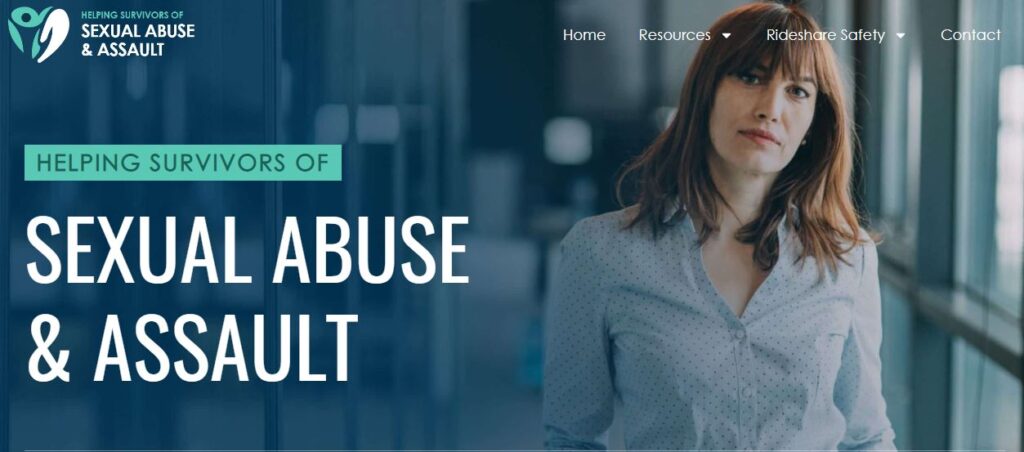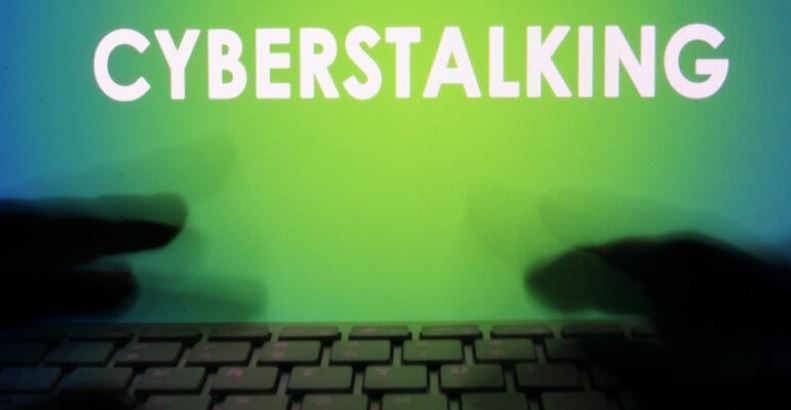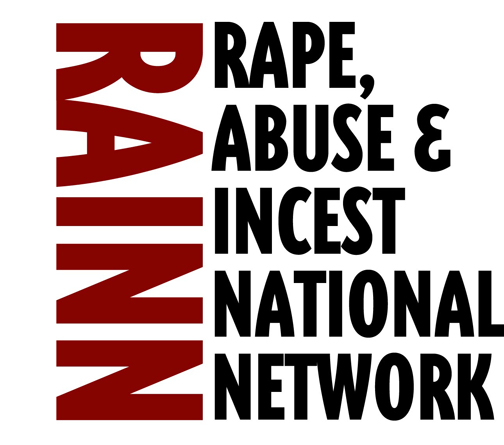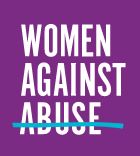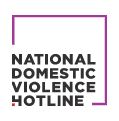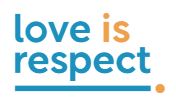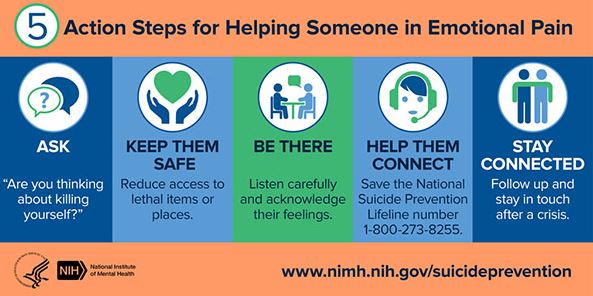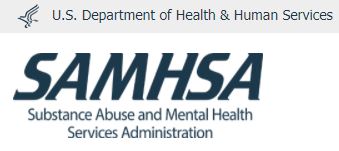Consent* Stalking* Cyberstalking* Mental Health* Online/Internet Safety* Self-Abuse & Suicide Prevention* Substance Abuse* Teen Dating Violence
Students
High School & College with Info for Parents
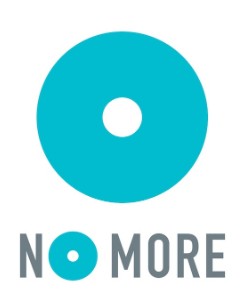
“With more than 1,400 allied organizations and over 40 state, local, and international chapters, NO MORE sparks grassroots activism, encouraging everyone—women and men, youth and adults, from all walks of life—to be part of the solution.” Click Here to learn more about NO MORE, and here How to Help Survivors
The NO MORE Silence, Speak Your Truth platform provides a safe and supportive space for people impacted by domestic violence to share their experiences, learn from other survivors, and connect to resources.
“Your story is personal and unique, but sharing it can be a healing experience for you and others.
Remember, healing is not linear and is different for everyone. It is important to stay patient with ourselves when setbacks occur in our process and forgive yourself for everything that may go wrong along the way.”
“NO MORE is a groundbreaking, global initiative comprised of the largest coalition of nonprofits, corporations, government agencies, media, schools, and individuals addressing domestic and sexual violence. We are committed to engaging, reaching, and working with people from diverse communities.” Click Here to GET HELP – Directory of domestic & sexual violence helplines & services ~ 200+ LOCATIONS AROUND THE WORLD! Click Here for the Global Directory Click Here for Additional RESOURCES Click Here to Learn How to Help
Bright Sky can help you:
- Understand what domestic violence can look like
- Spot the warning signs of domestic violence
- Evaluate the safety of a relationship
- Locate the nearest support services across the United States
- Learn how to help a friend, loved one, or colleague that may be affected
It’s On Us
1156 15th St NW, Suite 1000 | Washington, DC 20005 | contact@itsonus.org | 202.908.5226
OUR MISSION
Educational Tools
“The goal is for these resources to be easy to use, free, and easily adaptable to different campus communities. It’s On Us has held individual interviews and focus groups with students and staff to collect information on the gaps that exist in sexual violence prevention educational materials around the country today. We have developed peer-to-peer resources that address the existing needs students identified. Each educational tool was developed based on direct feedback and needs addressed by students and drawn from the most up-to-date research and best-practices, which are cited within each document.
“Choose a topic from the list below for resources that might help you with your campus organizing or programming. “
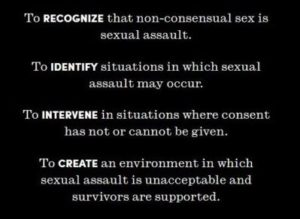
A Voice for the Innocent
A Voice For The Innocent is a safe, anonymous online community of support for victims of rape and sex abuse.
Join A Voice For The Innocent to share your support, or to share your story.
About
Blog Articles
Read Stories
Tell Your Story
Students
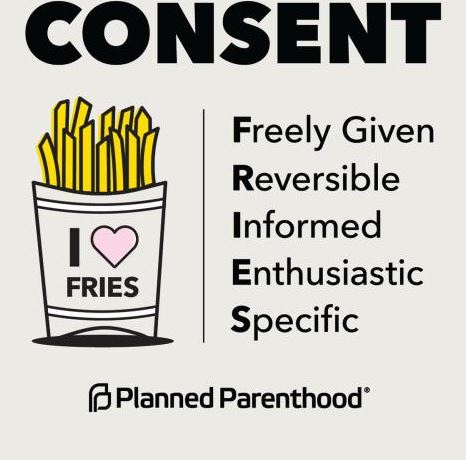
Information & Support for Survivors
How to Report Sexual Assault & Abuse
Child Sexual Abuse (Church, Schools, Foster Care, etc.)
Grooming: Know the Warning Signs (Children, Teens, Adults)
STALKING
Stalking occurs when someone repeatedly harasses or threatens someone else, causing fear or safety concerns. Most often, stalking occurs by someone the victim knows or with whom they had an intimate relationship.
Help prevent stalking by knowing the warning signs and how to get help.
https://www.cdc.gov/violenceprevention/datasources/nisvs/preventingstalking.html
FAST FACTS
https://www.cdc.gov/violenceprevention/intimatepartnerviolence/stalking/fastfact.html
Facts About Stalking
According to the National Intimate Partner and Sexual Violence Survey (NISVS):
- Stalking is common. About 1 in 6 women and 1 in 17 men have experienced stalking in their lifetimes.
- Stalking starts early. Nearly 54% of female victims and 41% of male victims experienced stalking before the age of 25.
- Stalking impacts the physical and mental health of victims. Research shows stalking can lead to depression and post-traumatic stress disorder. About 68% of female and 70% of male victims experienced threats of physical harm during their lifetime.
Common Stalking tactics can include:
- Unwanted phone calls
- Unwanted emails, instant messages, text messages, voice messages, or social media messages
- Approaching a victim or showing up unwanted, such as at the victim’s home, workplace, or school
- Leaving strange or potentially threatening items for the victim to find
- Watching, following, or tracking a victim
- Sneaking into the victim’s home or car and doing things to scare the victim or let them know the perpetrator had been there
PREVENTION IS POSSIBLE.
Everyone can work together to know, name, and stop stalking by:
- Helping others define and recognize stalking behaviors
- Mobilizing men and boys as allies in prevention efforts
- Creating and supporting safe environments within relationships, schools, and communities through programs and policies that promote healthy relationships
Need help? Know someone who does?
Contact your local service provider or a national hotline:
- Victim Connect: 1-855-4VICTIM (1-855-484-2846)
- National Domestic Violence Hotline: 1−800−799−7233 or TTY 1−800−787−3224 En Español
- The National Sexual Assault Hotline: 1-800-656-HOPE (4673)
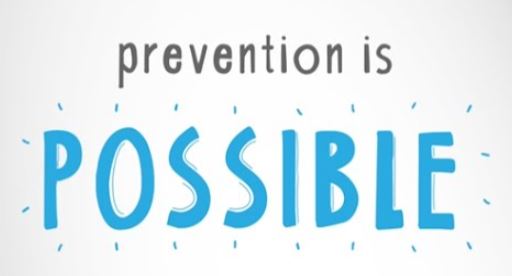
Cyber Civil Rights Initiative
HOTLINE: 1-844-878-CCRI (2274)
Posting Nude/Sexual Images Without Consent (“Revenge Porn”)
is a FEDERAL CRIME.
Cyber Civil Rights Legal Project
“The Cyber Civil Rights Legal Project helps victims of nonconsensual pornography by providing them legal assistance on a pro bono basis. The Cyber Civil Rights Legal Project is founded on the principle that people have a right of privacy in their intimate photographs and videos, and that the public, online dissemination of that media without consent is an invasion of that sexual privacy amounting to a “cyber civil rights” violation.”
US Attorneys who are providing pro bono legal assistance: https://www.cybercivilrights.org/professionals-helping-victims
LEGAL NOTICE:
Revenge porn is becoming (OR has already become) a federal crime as the SHIELD Act has been passed. The SHIELD Act is an amendment to the Violence Against Women Reauthorization Act of 2021.
The Violence Against Women Reauthorization Act of 2021 criminalizes the nonconsensual distribution of nude or sexually explicit images. Offenders could be imprisoned for up to two years.
“For victims of nonconsensual pornography, technology today makes it possible to destroy a person’s life with a single click,” Rep. Jackie Speier, D-Calif., said in a statement. Speier continued, “The damage caused by these attacks can crush careers, tear apart families, and, in the worst cases, has led to suicide.”
Text “NOFILTR” to 741741 for immediate assistance for “Grooming”
If you’re being sextorted, GET HELP NOW – TEXT “THORN” TO 741741
For Parents, Family Members, Teachers, Educators, Young Adults & Teens
Internet Safety for Kids | How to Keep Your Kids Safe Online
(Source: Consumernotice.org | Written By : Terry Turner | Edited By : Kim Borwick | Last Modified: August 18, 2021)
Threats to children’s internet safety include invasions of privacy, cyberbullying, sexting and harassment. Options to protect your children include parental controls, apps and tracking software. But the most effective way to keep your kids safe is to talk with them about online risks, how to avoid them and how they can come to you when something goes wrong.
Internet safety for kids depends on parents being aware of online risks and understanding how to help their children and teens avoid them.
Almost every American child and teen has access to the internet. They socialize in online games or on smartphones just as they would on a playground. They live largely in a digital community. But like any community, there are risks and dangers.
Parents are the best suited to monitor kids’ online activity. They are also the most trusted adults most kids will turn to if they experience online dangers. Understanding what your children or teens do online is vital to protecting them from digital threats. . .
What Are Kids Doing Online?
~ 30 percent have used the internet in ways their parents wouldn’t approve
~ 21 percent have visited sites where they can chat with strangers
~ 17 percent have visited porn sites
~ 11 percent have visited sites that offer ways to cheat on homework
~ 4 percent have visited online gambling sites
Source: Children’s Internet Usage Study, Center for Cyber Safety and Education (Grades 4-8)
TOPICS in article:
♦ How Children and Teens Get Online
♦ Online Dangers to Discuss with Your Kids
♦ How to Set Rules
♦ Steps You Can Take to Protect Your Children Online
♦ Using Tech and Apps to Protect Your Kids Online
♦ Monitoring, Tracking and Limiting Your Child’s Online Activity
♦ Filtering Out Inappropriate Content
♦ How to Teach Your Kids to Use Their Smartphones Responsibly
♦ Your Child’s First Smartphone | 5 Things to Think About
♦ Make Sure Your Teen Understands the Dangers of Texting and Driving
♦ Teaching Your Teens How to Use Social Media Safely
♦ Tips for Teen Safety on Social Media
♦ Cyberbullying Prevention
♦ Signs Your Child Is Being Cyberbullied
♦ What Parents Can Do to Deal With Cyberbullies
♦ Teach Your Child How to Stand Up for Cyberbully Victims
♦ How to Talk to Your Teens About Sexting | 5 Things to Tell Your Teens About Sexting
♦ What You Should Know About Your Kids and Online Gaming
♦ How to Keep Your Child Safe in Online Gaming
♦ What to Do If Your Child’s Safety Is Threatened Online
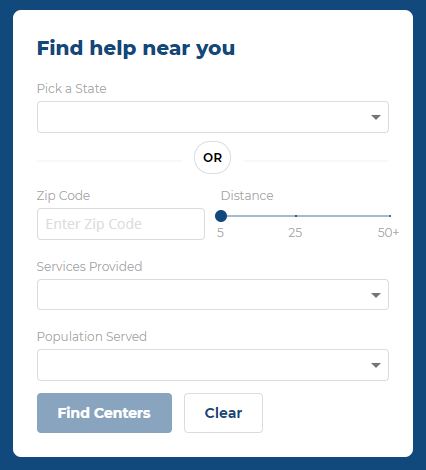
( centers.rainn.org )
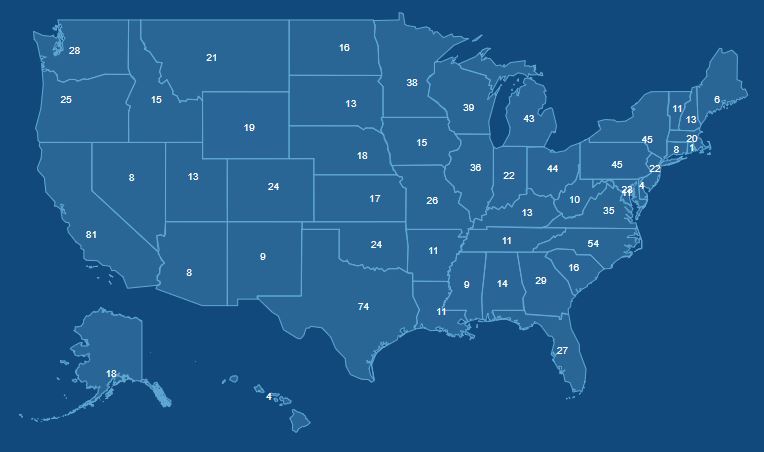
It’s helpful to have support in your own community after a sexual assault. Local service providers make it easy for you to access care, and they are knowledgeable about the laws in your area and local resources that can assist you.
RAPE, ABUSE AND INCEST NATIONAL NETWORK
HOTLINE: 1-800-656-HOPE (4673)
Available in Spanish | En Español
ADVOCATES AND SHELTERS (Local Programs) listed by State, organized by County:
https://www.womenslaw.org/find-help/advocates-and-shelters
For a list and description of organizations that provide assistance for survivors and their families, visit: https://www.rainn.org/national-resources-sexual-assault-survivors-and-their-loved-ones
- Asian, Native Hawaiian and Pacific Islander Survivors
- Black Survivors
- Child Abuse/Sexual Abuse
- College Students
- Domestic, Dating and Intimate Partner Violence
- Human Trafficking
- Immigrant Survivors
- Incest
- Indigenous Survivors
- Latinx Survivors
- Legal Resources
LGBTQ Survivors
LGBTQ Survivors of Color
Male Survivors
Medical/Physical Health
Mental Health
Military Resources
Stalking
Sexual Assault Prevention
Suicide & Self-Harm
Survivors with Disabilities
“The RAINN app gives survivors of sexual violence and their loved ones access to support, self-care tools, and information to help manage the short- and long-term effects of sexual violence.
Find Support
“The app’s “Hotline” feature can connect you directly with one-on-one support from a trained support specialist on RAINN’s National Sexual Assault Hotline via phone or online chat. It’s free, confidential and available 24/7.
“You can also chat with other survivors in our peer-to-peer HelpRoom.”
Practice Self-Care
“The app’s “Self-Care” section contains exercises to help you take a moment for yourself as you heal. They include a Mood Tracker to help you reflect on how you’re feeling and figure out the best ways to care for yourself; relaxing visuals from The Monday Campaign to help you destress; and audio exercises from Headspace for calming meditation.”
Learn More
“The app’s “Learn” section includes helpful information on sexual violence topics, finding and giving support, and healing.
“You can also hear from survivors offering their own real-life stories of hope and healing.”
The RAINN app is available in the App Store and on Google Play. Download it today.
Click Here for Survivors’ Stories
Each month, RAINN highlights a member of its National Leadership Council. The NLC is a group of dedicated individuals who have shown their commitment to RAINN’s mission of supporting survivors and ending sexual violence.
Whitney Wolfe Herd is the founder and CEO of Bumble, which puts women in control of the online dating experience, and a member of RAINN’s National Leadership Council. She recently became the youngest woman to take a company public and is a passionate advocate for women leaders in business.
Bumble CEO on Supporting Survivors and Creating Safer Dating Experiences
Excerpt:
What do we need to do as a country to prevent sexual violence?
“We need to promote discussions of healthy relationships from a young age as well as empowering folks of all genders—including men and boys—to be allies. Bystander intervention should be taught on every college campus. We also need to uplift and support the crucial work of organizations like RAINN, who are not only doing the work on the ground to educate communities and provide support to victims, but urging lawmakers to take action to, for instance, end the rape kit backlog.”
STUDENT SAFETY
https://www.rainn.org/safety-students
Safety & Prevention
https://www.rainn.org/safety-prevention
Safety for Parents
Safety for Students
Warning Signs
Protecting Others
Online Safety
Safe Web Browsing
Social Media Safety
Staying Safe
What Consent Looks Like
How to Respond if Someone is Pressuring You
Safety Planning
Safety Tips for Traveling
Alcohol Safety
Let’s Talk About…for all ages
Staying Safe on Campus
https://www.rainn.org/articles/staying-safe-campus
Alcohol Safety
https://www.rainn.org/articles/alcohol-safety
Steps You Can Take to Prevent Sexual Assault
https://www.rainn.org/articles/steps-you-can-take-prevent-sexual-assault
Your Role In Preventing Sexual Assault (Bystander)
https://www.rainn.org/articles/your-role-preventing-sexual-assault
What Consent Looks Like
https://www.rainn.org/articles/what-is-consent
How to Help Someone You Care About – Tips from RAINN
https://www.rainn.org/sites/default/files/HelpSomeoneOnePageRAINN.pdf
SelfCare After Trauma – Tips from RAINN
https://www.rainn.org/sites/default/files/SelfCareOnePageRAINN.pdf
Online Dating and Dating App Safety Tips
https://www.rainn.org/online-dating-and-dating-app-safety-tips#overlay-context=
#RAINNDAY & #LetsGetLoud “Need some social media inspiration? Try pairing a few of the posts with our RAINN Day graphics below.
“Browse the #RAINNDay and #LetsGetLoud hashtags on Instagram to see how students around the country are raising awareness for Sexual Assault Awareness and Prevention Month.
#LetsGetLoud & speak out about sexual assault during #RAINNDay. Make a difference: rainn.org/rainnday
#LetsGetLoud so survivors know that they are not alone. I’m making a difference on my campus with #RAINNDay on 4/14. You can too: rainn.org/rainnday
#LetsGetLoud so survivors know that they are believed and sexual violence is not tolerated on our campus. Learn how you can help at rainn.org/rainnday
#LetsGetLoud about protecting each other. I’m bringing my campus together on #RAINNDay to help end sexual assault. rainn.org/rainnday As a college-age person, we are at a high risk for sexual violence. #LetsGetLoud and stop sexual assault on college campuses. Find out how at #RAINNDay. rainn.org/rainnday
SPREAD THE WORD ON SOCIAL MEDIA!!
“You can play an important role in stopping sexual violence and connecting survivors with the support they deserve. The best part? You only have to lift a finger. Acting with RAINN on social media gives you a chance to have a voice in the conversation about sexual violence.
Share the messages below on social media:
Connect survivors with help: The National Sexual Assault Hotline provides free, 24/7 support to survivors of sexual assault and their loved ones. Reach those who need this valuable service by sharing the hotline information on social media.
If you have been affected by sexual assault, you are not alone. @RAINN provides free, confidential support 24/7 at online.rainn.org.
@RAINN provides free, 24/7 support for survivors of sexual assault and their loved ones at 800.656.HOPE and online.rainn.org.
Sexual assault is never your fault. @RAINN now offers free, confidential Spanish support services online 24/7 at rainn.org/es.
Educate your friends: Debunk myths and educate your network about sexual violence. Share a statistic to shed light on the issue. Every 73 seconds, another American is sexually assaulted. Learn more and take action with @rainn at rainn.org. 98% of rapists will never spend a day in jail. Help bring rapists to justice with @rainn at rainn.org.
Advocate for survivors of sexual violence: Use your voice to create a ripple effect of change for survivors among your peers, in your community, or even on Capitol Hill.
Raise awareness and educate students about sexual assault resources from @RAINN with #RAINNDay! Learn more at rainn.org/rainnday.
Support funding to help victims of sexual violence and hold perpetrators accountable. rainn.org/action-center @rainn #ActWithRAINN.”
 Public Policy and Action – Interactive Map – Laws of Your State
Public Policy and Action – Interactive Map – Laws of Your State
RAINN Needs Your Voice
Countless survivors’ kits are languishing on shelves in evidence rooms and labs across the U.S. Even today, some survivors must wait nearly a decade to get their kits processed and tested. Right now, approximately 200,000 kits wait to be tested. Today, we have a chance to make a difference.
The U.S. Senate is currently deciding how much to spend on the backlog and your voice can be the difference between more funding or less.
Stand With Survivors and Ask Your Senators to End the Backlog. Justice Delayed is justice denied. Urge your senators to do their part to help end the rape kit backlog today.
Send email = https://p2a.co/1jqx2dk?p2asource=FY21_BacklogAlert_email1_all
How RAINN’s Policy Team Works Help Survivors https://www.rainn.org/news/how-rainns-policy-team-works-help-survivors
“Recently, as Congress has considered police reform legislation, RAINN has urged House and Senate leaders to include a number of additional changes to help survivors of sexual violence. RAINN’s suggestions address issues that disproportionately impact Black victims of sexual violence, especially Black girls, who are overrepresented in juvenile justice data. According to The Sex Abuse to Prison Pipeline: The Girls Story, 76 percent of girls involved with the justice system have histories of physical and sexual abuse.”
From:
10 Red Flag Warning Signs of Abuse
The anatomy of an unhealthy, one-sided relationship.
Posted October 30, 2020 | Abigail Brenner, MD
- All-consuming jealousy. When a person wants your full attention and time 24/7 and gets angry and demanding when you spend time with anyone else, you know you’re in trouble. Extreme possessiveness is pathological
- The attempt to control all aspects of a partner’s life. What you do and how you do it, where you go, who you’re with, what you like spending time doing, how you dress—virtually every aspect of your life—is up for scrutiny and control. Demanding an accounting of your time becomes the norm. The feeling for the abused partner is that of being a possession rather than an independent person.
- The attempt to isolate the partner from family and friends. This is a version of divide and conquer. The abuser wants full control and the only way to accomplish that is to severely limit contact with people who are close to the abused partner. Not only that, but the abuser is attempting to limit any negative feedback offered by friends and family about the abuser. If isolation/alienation from close others can’t be accomplished, the abuser may use the tact of constantly criticizing close family and friends so as to drive a wedge and to, at least, limit the contact of others.
- Violating your privacy. Constantly checking up on their partner, the abuser will think nothing of checking your phone, emails and texts, computers, etc. Since you “belong” to them nothing is private anymore.
- Treating you with disrespect by blaming, shaming, and putting you down. The abuser will find fault with everything you do. They will attempt to make you feel unworthy and unloved. And, of course, if you grow to believe that you are unworthy and unloved, the attachment to the one who professes to be the only one who truly loves you becomes all the more important. The abuser may resort to many forms of humiliation including bullying, calling the abused by derogatory names, embarrassing their partner in front of others, insulting, infantilizing, and acting out in public.
6. Blaming you for their bad behavior. Since you are the center of their world, the one they’re the closest to, the way you behave must be the reason why they are acting so badly. You, the abused, made them, the abuser, behave badly. The abuser will make you feel responsible for them and their behavior and will make you feel guilty that you didn’t do what they wanted you to do.
7. Threatening you with harm, or alternately, with hurting themselves if you don’t do what they want. Their inability to control the situation may cause them to accelerate their behavior taking it several notches up from verbal to physical. If they are unable to get satisfaction in controlling you they may up the ante to threatening you with bodily harm, and/or harming those you care about, especially children, and beloved pets.
8. Destroying your personal possessions. The abuser may act out against you by defacing or destroying personal things that are important to you. This is a way of punishing you for not bending to their will, for not doing as they say. It’s also an attempt to deprive you of the things that are personally yours, things you keep around that may support and ground you, things that define you separately from anyone else.
9. Inability to show compassion toward anyone, but especially you. The person who abuses may lack the ability to have compassion in the first place. But if they were ever able to be compassionate their frustration over time may make them incapable or unwilling to feel for their partner’s predicament. If they could be compassionate that would have to allow for the fact that their partner has a life and interests of their own. An abuser often doesn’t want you to have and do anything that doesn’t include them.
10. Pressuring you to engage in what is important to them, at the expense of what’s important to you. The abuser may try to enforce lifestyle, friends, certain behaviors, and preferences on you while robbing you of your opinions, preferences, and relationships. They have a real lack of interest in what’s important to you.
Click Here for Resources – Mental Health & Crisis
Click here for Resources – ONLINE THERAPY (Many are FREEE!!)
Assault Prevention in Relationships
If you’ve identified that your partner exhibits controlling or aggressive behaviors and you’re afraid to address these issues within your relationship, it’s time to get help.
Victims often don’t realize the dangers of their situation until it’s too late — the dynamic between the abuser and abused is strategically designed to discourage the victims from acknowledging or addressing the problem. Intimate partner abuse and violence are never okay. They’re more common than you might think, and it’s wholly within your power and your rights to get out safely.
Ways of Domestic Violence Prevention
https://www.marriage.com/advice/domestic-violence-and-abuse/ways-of-domestic-violence-prevention/
20 Effective Ways of Domestic Violence Prevention (marriage.com)
Preventing Intimate Partner Violence |Violence Prevention|Injury Center|CDC
Relationships and Violence Prevention – MSU Denver
Preventing Interpersonal Violence in Relationships – PsychAlive
10 Signs of a Healthy Relationship – One Love Foundation (joinonelove.org)
10 Signs of an Unhealthy Relationship – One Love Foundation (joinonelove.org)
ARE YOU A CONCERNED PARENT, TEACHER, EDUCATOR, COUNSELOR, ADMINISTRATOR, ETC.???
We need to teach our children how to prevent violence in relationships!
Peace Over Violence – In Touch with Teens Curriculum
In order to help youth develop and maintain healthy, violence-free relationships, Peace Over Violence has been implementing the In Touch With Teens Violence Prevention curriculum in junior high and high schools and other community based youth organizations. The eleven-unit curriculum empowers youth to have healthy relationships by providing information about power and control, elements of healthy relationships and healthy sexuality, and media literacy as well as education on sexual harassment, sexual assault, and dating violence. The curriculum further addresses the development of pro-social skills such as empathy, impulse control, effective communication, problem solving, and bystander accountability. Continue Reading
SIECUS – Sex Ed for Social Change
“Teen Dating Violence: Sex ed is a prevention strategy”
“…teen dating violence is not being talked about nearly enough. We need to spread awareness to make sure young people are equipped with the information they need to understand and address abusive relationships. And I bet you can guess where this is going…
That’s right: sex ed!
Comprehensive sex education can provide young people with the exact information and skills they need to understand and address TDV before they become teenagers. It includes topics and lessons on healthy relationships, identifying abusive behavior, communication, consent, and boundary setting/respecting. As outlined by the National Sexuality Education Standards, this type of instruction can teach young people to: ” Continue Reading
SIECUS – Teen Dating Violence: Sex ed is a prevention strategy

THORN Digital Defenders
(Ashton Kutcher and Demi Moore, Co-Founders) THORN
Text “NOFILTR” to 741741 for immediate assistance for “Grooming”
If you’re being sextorted, GET HELP NOW – TEXT “THORN” TO 741741
Thorn, aka Digital Defenders of Children; Ashton Kutcher’s organization driving tech innovation to fight child trafficking and the sexual exploitation of children.
About Our Fight Against Sexual Exploitation of Children
Our Work to Stop Child Sexual Exploitation
We build technology to defend children from sexual abuse.
We refuse to live in a world where the technology exists to help kids but simply isn’t being used. We build powerful products, lead new programs, maintain essential resources, and develop awareness campaigns to attack the issue from all sides. Technology must be part of the solution.
ACCELERATE victim identification. We identify critical technical needs and produce tools that allow law enforcement to stay ahead of perpetrators and identify more children.
Since 2016, Spotlight has helped law enforcement find kids faster. Our flagship product was developed based on the insights gained from our first survivor survey.
Spotlight accelerates victim identification and helps law enforcement make the best use of the critical time they have to focus on finding more child sex trafficking victims.
EQUIP platforms. Many small and mid-size companies do not have the resources or knowledge to implement child safety procedures and tools, making their platforms vulnerable to abusive content and behavior. We offer resources and tools for companies to help protect kids on their platforms.
Our first step in equipping platforms is the Sound Practices Guide, offering best practices and concrete steps to for companies of all sizes to help protect kids on their platforms, including the Industry Hash Sharing program and PhotoDNA.
Thorn’s commercial product, Safer, is the first comprehensive solution for platforms to identify, remove and report child sexual abuse material.
EMPOWER the public. Here’s where we share what we’ve learned. It’s all about preventing further abuse. We’re getting the word out – increasing awareness and starting conversations.
THORN’s Vision
Eliminate child sexual abuse material from the internet.
Working to deter the problem ~ Child Sexual Abuse Material
The internet has made it too easy for abusers to share child sexual abuse material (legally known as child pornography). They create images and videos with an audience in mind. That content gets shared widely beyond the initial targets – recirculating the image, perpetuating the abuse and retraumatizing the child.
Help prevent child sexual abuse.
BE AWARE.
Educate yourself on child abuse and the intersection with technology.
TALK.
Stay active and engaged with your community to keep an eye out for signs of child abuse. Talk to your children about abuse and the unique risks on the internet.
GET TO KNOW THE CHILDREN IN YOUR COMMUNITY.
They won’t be able to ask for help once something goes wrong and will need you to have your eyes open.
SUPPORT ORGANIZATIONS
… working to prevent abuse and provide survivors with resources. Get to know those in your community as well.
Do you know what GROOMING is?
Do you know what SEXTORTION is?
What is grooming?
Text NOFILTR to 741741 for immediate assistance.
A term used broadly to describe the tactics abusers deploy through the internet to sexually exploit kids and teens.
See also: online safety, grooming, groomer
https://nofiltr.org/
https://nofiltr.org/grooming/#talks
https://nofiltr.org/resources/
We’ve all heard about it or seen it (maybe on snap, in school, or even with friends) someone’s nudes are getting passed around. But who is to blame?
What about the rando that thought it’d be cool to pass it on to 10 friends in a group chat?
Nah, sharing someone else’s nudes is never okay.
STOP SEXTORTION
SEXTORTION
YUP. IT’S A THING.
It’s the threat to reveal intimate images to get you to do something you don’t want to do
If you’re being sextorted, GET HELP NOW – TEXT “THORN” TO 741741
Get Help
From: Stop Sextortion
SEXTORTION
YUP. IT’S A THING.
It’s the threat to reveal intimate images to get you to do something you don’t want to do
TIPS FOR ADULTS
Talk to your kids about sextortion.
THIS IS HARD, BUT YOU’RE ALREADY DOING GREAT BY BEING HERE.
Your children are safer because of your support and guidance through all of life’s challenges. Safety in the digital age is new, and chances are your children feel more comfortable navigating digital communities than you do, while knowing less than they need to stay safe. There are a few things you can do to help your child avoid getting into tricky, and sometimes dangerous, situations like sextortion.
You play an important role in students’ lives and as new threats emerge, it is important to stay ahead of the trends. Teens clearly told us that you are often the first line of defense.
When an individual experiences sextortion, they’re often experiencing it simultaneously on multiple platforms. We know technology can be misused, so it is important to adopt industry standard best practices so that bad actors have fewer places to hide and victims can be adequately protected. Be sure to invest in your safety policies early to keep sextortion off your platform.
Our kids are trying to navigate community and connection in the digital age, while we’re trying to keep up with keeping them safe. Unfortunately, technology moves faster than our laws are able to respond to new abuse trends. By learning about these trends – like sextortion – and including them in your policy agenda, you can help kids feel safe and supported.
From: Stop Sextortion
THORN FOR PARENTS
Announced on September 9, 2021. . .
For parents concerned about their child’s digital safety as they grow up online, we’ve compiled resources, developed conversation guides, and much more to help parents navigate even the most awkward conversations with care and confidence. Here for your talks, awkward pauses and all.
BE YOUR KID’S SAFETY NET
Kids today face a very different set of challenges. There’s a whole new landscape where a child’s relationship with technology and normal sexual development overlap, with a whole new set of experiences online. And they need your help to navigate it safely.
TOPICS: Sexting & Nudes | Device Access & Monitoring | A Balanced Approach |
For Parents, Family Members, Teachers, Educators, Young Adults & Teens
Internet Safety for Kids | How to Keep Your Kids Safe Online
(Source: Consumernotice.org | Written By : Terry Turner | Edited By : Kim Borwick | Last Modified: August 18, 2021)
Threats to children’s internet safety include invasions of privacy, cyberbullying, sexting and harassment. Options to protect your children include parental controls, apps and tracking software. But the most effective way to keep your kids safe is to talk with them about online risks, how to avoid them and how they can come to you when something goes wrong.
Internet safety for kids depends on parents being aware of online risks and understanding how to help their children and teens avoid them.
Almost every American child and teen has access to the internet. They socialize in online games or on smartphones just as they would on a playground. They live largely in a digital community. But like any community, there are risks and dangers.
Parents are the best suited to monitor kids’ online activity. They are also the most trusted adults most kids will turn to if they experience online dangers. Understanding what your children or teens do online is vital to protecting them from digital threats. . .
What Are Kids Doing Online?
~ 30 percent have used the internet in ways their parents wouldn’t approve
~ 21 percent have visited sites where they can chat with strangers
~ 17 percent have visited porn sites
~ 11 percent have visited sites that offer ways to cheat on homework
~ 4 percent have visited online gambling sites
Source: Children’s Internet Usage Study, Center for Cyber Safety and Education (Grades 4-8)
TOPICS in article:
♦ How Children and Teens Get Online
♦ Online Dangers to Discuss with Your Kids
♦ How to Set Rules
♦ Steps You Can Take to Protect Your Children Online
♦ Using Tech and Apps to Protect Your Kids Online
♦ Monitoring, Tracking and Limiting Your Child’s Online Activity
♦ Filtering Out Inappropriate Content
♦ How to Teach Your Kids to Use Their Smartphones Responsibly
♦ Your Child’s First Smartphone | 5 Things to Think About
♦ Make Sure Your Teen Understands the Dangers of Texting and Driving
♦ Teaching Your Teens How to Use Social Media Safely
♦ Tips for Teen Safety on Social Media
♦ Cyberbullying Prevention
♦ Signs Your Child Is Being Cyberbullied
♦ What Parents Can Do to Deal With Cyberbullies
♦ Teach Your Child How to Stand Up for Cyberbully Victims
♦ How to Talk to Your Teens About Sexting | 5 Things to Tell Your Teens About Sexting
♦ What You Should Know About Your Kids and Online Gaming
♦ How to Keep Your Child Safe in Online Gaming
♦ What to Do If Your Child’s Safety Is Threatened Online
DID YOU KNOW…
YOU CAN DOWNLOAD A TECH SAFETY APP
TO PROTECT YOUR TECHNOLOGY, PRIVACY AND SAFETY!
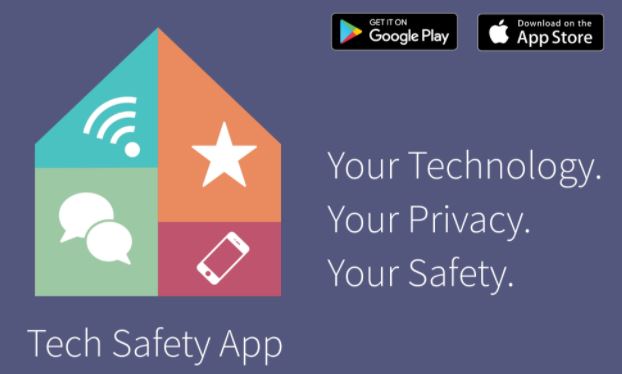
Tech Safety
(Safehorizon.org)
“Computers, tablets, phones, apps, and social network sites impact how we connect to the world every day. They can offer help, valuable resources, and support if you are experiencing domestic violence or stalking. As you use technology and plan for your safety in these situations, it is also important to be aware of the risks. The information below can help you to use technology in more informed, safer ways. These tips provide suggestions for you to be aware of. But you are the only one who can decide what is best for you and your safety.”
https://www.safehorizon.org/tech-and-cyber-safety/
- English and Spanish
- Online Safety
- Networking Safely on Social Media
- Phone Safety
You can download Tech Safety Tips in English and Spanish.
Women Against Abuse
INTERNET SAFETY
Technological advances have allowed intimate partner violence to take new forms, including access to private information, control over online accounts, and the use of electronic devices to track one’s whereabouts.
If you are seeking information about domestic violence and ways to get help, it is possible your partner can track this information.
It is vital to protect your online activities and understand the ways in which technology may compromise your safety.
Your online activity can be monitored through a number of ways, including spyware, hacking, and keystroke loggers. Even if you are careful about deleting your browser history, it is still possible for someone to gather information about what you are doing with your computer.
Whether or not someone has direct access to your computer, it is still possible for them to remotely hack into your computer.
Please review the following tips and information from the National Network to End Domestic Violence:
- If you think your activities are being monitored, they probably are. Abusive people are often controlling and want to know your every move. You don’t need to be a computer programmer or have special skills to monitor someone’s computer and Internet activities—anyone can do it and there are many ways to monitor with programs like Spyware, keystroke loggers and hacking tools.
- It is not possible to delete or clear all the “footprints” of your computer or online activities. If you are being monitored, it may be dangerous to change your computer behaviors such as suddenly deleting your entire Internet history if that is not your regular habit.
- If you think you may be monitored on your home computer, be careful how you use your computer since an abuser might become suspicious.
- You may want to keep using the monitored computer for innocuous activities, like looking up the weather. Use a safer computer to research an escape plan, look for new jobs or apartments, bus tickets, or ask for help.
- Email and Instant/Text Messaging (IM) are not safe or confidential ways to talk to someone about the danger or abuse in your life. If possible, please call a hotline instead. If you use email or IM, please use a safer computer and an account your abuser does not know about.
- Computers can store a lot of private information about what you look at via the Internet, the emails and instant messages you send, internet-based phone and IP-TTY calls you make, web-based purchases and banking, and many other activities.
- It might be safer to use a computer in a public library, at a trusted friend’s house, or an Internet Café.
The above information is taken from the National Network to End Domestic Violence, Internet and Computer Safety page.
In addition, learn about Facebook safety with the Privacy and Safety on Facebook guide from the National Network to End Domestic Violence!
Internet Safety
Web Browsers store a history of all the pages you visit during your time on the Internet. It is imperative that you remove this information from your computer so that an abuser cannot discover it. Please remember to do this procedure before you log off the Internet.
CAUTION: If you are using your abuser’s computer, you may be leaving a trail that can be traced to this web site. Be sure to clear the view history of the web browser when you are through.
Instructions for Clearing the View History in your Web Browser:
Using the toolbar of your web browser, find the menu selection that gives you view options.
- Microsoft Internet Explorer: Use the View button, then select Options, then Navigation. In the History section, select Clear History, then OK.
- Netscape Navigator: Use the Options button, then select Network Preferences, then both Clear Memory Cache and Clear Disk Cache, then OK.
- Firefox: Open the Tools menu, then select Options. Open the Privacy tab and select “Cache” sub-category. Click the “Clear” button and then click OK to clean cache.
- AOL: Click on the Members menu, click on Preferences click on the www icon; select Advanced and then Purge Cache.
Be aware that this is not foolproof. An observant computer user may notice that the history is gone, and get suspicious.
If you feel you may be at risk if your abuser discovers you were using the Internet, call 911 or RAINN at 1.800.656.HOPE, The Rape, Abuse & Incest National Network.
(Source: aftersilence.org
“The above information has been adapted from mcleancountyil.gov, and is provided for guidance only.”)
Internet Safety – The Hotline
Call 1.800.799.SAFE (7233)
Internet Safety
Stay safe. Stay connected.
Technology and the Internet are powerful tools for anyone experiencing domestic violence. They can be essential resources to access help and information, and valuable platforms to connect with friends, family members, advocates, and service providers.
Unfortunately, they can also be used by abusive partners to begin, continue, or escalate abuse, making it all the more important to ensure your safety online.
Read more at Internet Safety – The Hotline
Love is respect
Call 1.866.331.9474
- Text: LOVEIS to 22522
- Live Chat
Safety online – love is respect
Most of us spend a lot of time online. Pretty much everything we do can now be done on the Internet, including accessing information, keeping in touch with others, and getting help when we need it. Unfortunately, such frequent use (and the ways in which information is collected every time we go online) means partners who are abusive have more ways than ever to access your information and monitor your movements and behaviors.
Remember:
- Your computer and cell phone use can be monitored without you knowing it.
- Your history can never be completely erased from a computer or device, even if you browse in “private” or “incognito” mode.
- Email can be intercepted like physical mail.
- Global Positioning System (GPS) trackers can be placed in your car or on items like your purse or cell phone.
- love is respect advocates are available 24/7 to help you identify ways to take extra precautions when using technology.
Always remember to keep your safety in mind when contacting love is respect and accessing our services.
Be sure to clear any websites you wouldn’t want your partner to see from your browser history, especially after visiting this website.

Keep your Online Life Private.
This is definitely hard to do with Facebook, Instagram, Twitter, and the self-disclosure they all promote. You may already know by now that putting your address on the Internet is incredibly dangerous, but also think twice about sharing your current location.
Kristin Jackson once saw an Instagram public post with the caption that read, “So drunk, must get home,” and she had tagged her location!
Try to refrain from tagging your location every time you post, and definitely use the privacy options to your advantage. If anything, it will keep you safe and give you an element of mystery.
Source:
Jackson, Kristin Collins. https://www.bustle.com/articles/32325-10-ways-to-help-protect-yourself-from-sexual-assault-even-though-you-shouldnt-have-to. “10 Ways to Help Protect Yourself From Sexual Assault — Even Though You Shouldn’t Have To.” (Sept. 25, 2014.)

( centers.rainn.org )

It’s helpful to have support in your own community after a sexual assault. Local service providers make it easy for you to access care, and they are knowledgeable about the laws in your area and local resources that can assist you.
Student Safety
https://www.rainn.org/safety-students
Safety & Prevention
https://www.rainn.org/safety-prevention
Online Safety
Safe Web Browsing
Social Media Safety
Online Dating and Dating App Safety Tips
https://www.rainn.org/online-dating-and-dating-app-safety-tips#overlay-context=
KEEPING CHILDREN SAFE ONLINE
(US Dept of Justice)
From Keeping Children Safe Online (justice.gov)
“Due to COVID-19, kids and adults are online more than ever, often unsupervised in the same space.
“Help kids stay safe.”
“Parents should stay involved in their digital world, know the apps they use, use parental controls where possible, and block and report people who make them feel uncomfortable.
“Kids should talk with a trusted adult so they understand online risks, only chat with people they know, ensure their online accounts are private, block people they don’t know or trust, and trust their instinct—if something makes them feel uncomfortable, tell a trusted adult about it.
“Kids and parents should stay alert—people aren’t always who they seem in online environments where identity is easy to fake.
“Stay safe at home. Stay safe online.
“To report an online child sexual exploitation offense, call 911 or go to report.cybertip.org.”
Online Safety (for Teens) – Nemours KidsHealth
(kidshealth.org/en/teens/internet-safety.html)
Lauren’s Kids
Our mission is to prevent child sexual abuse through education and awareness and to help survivors heal with guidance and support. https://laurenskids.org/
Lauren’s Kids is based in South Florida and educates adults and children about sexual abuse prevention through in-school curricula, awareness campaigns, and speaking engagements around the country and the world.
The Issue of Child Sexual Abuse | Includes: Tactics of the perpetrator and Signs a child may be a victim of sexual abuse
Combatting Human Trafficking | Family Safety
SAFER, SMARTER FAMILIES | Digital Health & Safety Resources
During this uncertain time of school closures, childcare pressures, and increased reliance on digital devices, it is important for families to be mindful of safety – the FBI has released guidance for parents to stay alert, especially when 1 in 5 children who touch a digital device will be sexually solicited online.
Parents – fear not! We are here to provide you with the knowledge, language, and activities necessary to teach your elementary school aged child(ren) about personal safety in a way that is comfortable, accessible, and fun. (Have a middle or high schooler in your home? Visit SaferSmarterFamilies.org for lessons designed for older children and teens!)
Lauren’s Kids has posted 6 digital lessons and activities from the Blueprint for Building Safer, Smarter Families resource, designed for use with elementary school students.
For older children in middle school and high school, see SAFER SMARTER FAMILIES
Safer, Smarter Families Family Safety Toolkit
The Safer, Smarter Families Family Safety Toolkit is designed to help your family address personal safety, abuse prevention, and social-emotional learning in a way that is comfortable and accessible for both you and your children.
For Parents, Family Members, Teachers, Educators, Young Adults & Teens
For More Information on Human Trafficking Awareness & Prevention
and
ONLINE SAFETY
https://youth.gov/youth-topics/trafficking-of-youth/the-problem
https://www.safehorizon.org/get-informed/human-trafficking-statistics-facts/#definition/
https://www.dosomething.org/us/facts/11-facts-about-human-trafficking
LGBTQ+ – https://polarisproject.org/
Survivor Care*Prevention Education*Strategic Collaboration with Adults – https://love146.org/
Short video explaining why children are most of the victims of trafficking – Hotline –
For Parents, Family Members, Teachers, Educators, Young Adults & Teens
For More Information on Human Trafficking Awareness & Prevention
and
ONLINE SAFETY
Frederick Douglass Initiative teaching awareness and prevention strategy to children in schools
https://www.covenanteyes.com/2016/01/22/porn-and-sex-trafficking-10-facts-from-the-experts/
Video from 10 Facts
in 56 Human Trafficking Facts
From 56 Human Trafficking Facts:
24. Sex traffickers often recruit children because not only are children more unsuspecting and vulnerable than adults, but there is also a high market demand for young victims. Traffickers target victims on the telephone, on the Internet, through friends, at the mall, and in after-school programs.[17]
28. Sex traffickers use a variety of ways to “condition” their victims, including subjecting them to starvation, rape, gang rape, physical abuse, beating, confinement, threats of violence toward the victim and victim’s family, forced drug use, and shame.[14]
49. The FBI estimates that over 100,000 children and young women are trafficked in America today. They range in age from nine to 19, with the average being age 11. Many victims are not just runaways or abandoned, but are from “good” families who are coerced by clever traffickers.[17]
52. Human trafficking victims face physical risks, such as drug and alcohol addiction, contracting STDs, sterility, miscarriages, forced abortions, vaginal and anal trauma, among others. Psychological effects include developing clinical depression, personality and dissociative disorders, suicidal tendencies, Post-Traumatic Stress Syndrome, and Complex Post-Traumatic Stress Syndrome.[14]

HealthyPlace
Mental Health Support, Resources & Information | HealthyPlace
“Healthyplace.com is the largest consumer mental health site on the net. We provide authoritative information and support to people with mental health concerns, along with their family members and other loved ones.
“At HealthyPlace.com, you’ll find comprehensive, authoritative information on psychological disorders, psychiatric medications, and other mental health treatments. We also have online psychological tests, breaking mental health news, and more.
“We believe the most important thing in a person’s life is “peace of mind”.
“And at HealthyPlace.com, we help bring that to you by providing mental health information from experts, as well as everyday people who are dealing with psychological disorders.
Learn More About HealthyPlace.com | HealthyPlace
On About Us, you will see a list of Conditions from “Abuse” to “Schizoaffective Disorder” which link to those Communities where you can find “tons” of valuable information, articles, books, and videos. (Some links are provided below for your convenience.)
They also have many, many Mental Health BLOGS! Including:
Mental Health for the Digital Generation | Trauma/PTSD | Verbal Abuse in Relationships (includes an article How Abuse Can Lead to Suicidal Thoughts | HealthyPlace)
Mental Health Support, Resources & Information | HealthyPlace
Conditions include:
- Abuse Information & Resources (Abuse Information, Emotional & Psychological Abuse, Physical Abuse, Domestic Violence, Teenage Dating Violence, Help)
- Addictions
- Anxiety, Panic, Phobias
- Depression (Types, Treatment, Self-Help)
- Dissociative Disorders (Types, Causes, Symptoms, Treatment)
- LGBT & Mental Health (much more, including links to many Psychological Tests)
- Self-Help
Click Here for Resources – Mental Health & Crisis
Click here for Resources – ONLINE THERAPY (Many are FREEE!!)
HelpGuide helps you help yourself
HelpGuide is a small independent nonprofit that runs one of the world’s top 10 mental health websites. Over 50 million people from all around the world turn to HelpGuide each year for trustworthy content they can use to improve their mental health and make healthy changes.
In Memory of Morgan Segal
“HelpGuide is dedicated to Morgan Leslie Segal, whose tragic suicide might have been prevented if she had access to better information.”
“Following Morgan’s death, her parents Robert and Jeanne Segal began sharing their grief and discovered that all too many others had experienced similar struggles. “The pain was so evident,” said Robert, “the subject so frightening, hidden, and loaded with stigma, that they don’t know where to turn.” They concluded that the best way to honor the memory of their daughter was by helping people in similar trouble by guiding them toward appropriate information and care.
“And so HelpGuide was born.”
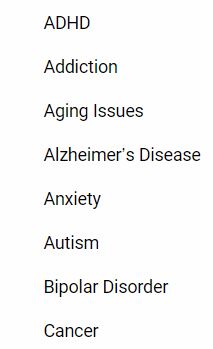
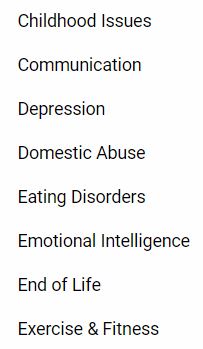
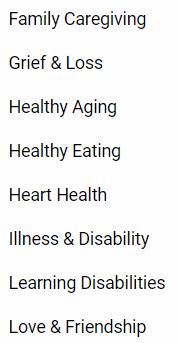
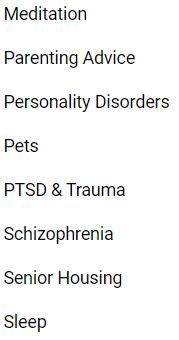
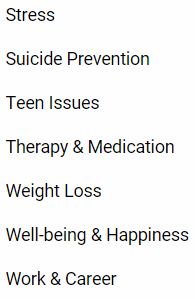
National Alliance on Mental Illness
HOTLINE 1-800-950-NAMI (6264)
Text NAMI to 741-741
Provides information and referral services – not counseling.
They can help you find free or low-cost online therapists or resources.
SAMHSA’s National Helpline 800-662-HELP (4357) | TTY: 800-487-4889

Signs and Symptoms
The behaviors listed below may be signs that someone is thinking about suicide.
- Talking about wanting to die or wanting to kill themselves
- Talking about feeling empty, hopeless, or having no reason to live
- Making a plan or looking for a way to kill themselves, such as searching for lethal methods online, stockpiling pills, or buying a gun
- Talking about great guilt or shame
- Talking about feeling trapped or feeling that there are no solutions
- Feeling unbearable pain (emotional pain or physical pain)
- Talking about being a burden to others
- Using alcohol or drugs more often
- Acting anxious or agitated
- Withdrawing from family and friends
- Changing eating and/or sleeping habits
- Showing rage or talking about seeking revenge
- Taking great risks that could lead to death, such as driving extremely fast
- Talking or thinking about death often
- Displaying extreme mood swings, suddenly changing from very sad to very calm or happy
- Giving away important possessions
- Saying goodbye to friends and family
- Putting affairs in order, making a will
If these warning signs apply to you or someone you know, get help as soon as possible,
particularly if the behavior is new or has increased recently.
Click Here for Resources – Mental Health & Crisis
Click here for Resources – ONLINE THERAPY (Many are FREEE!!)
Risk Factors
Suicide does not discriminate. People of all genders, ages, and ethnicities can be at risk. Suicidal behavior is complex, and there is no single cause. Many different factors contribute to someone making a suicide attempt. But people most at risk tend to share specific characteristics. The main risk factors for suicide are:
- Depression, other mental disorders, or substance abuse disorder
- Certain medical conditions
- Chronic pain
- A prior suicide attempt
- Family history of a mental disorder or substance abuse
- Family history of suicide
- Family violence, including physical or sexual abuse
- Having guns or other firearms in the home
- Having recently been released from prison or jail
- Being exposed to others’ suicidal behavior, such as that of family members, peers, or celebrities
Many people have some of these risk factors but do not attempt suicide. It is important to note that suicide is not a normal response to stress. Suicidal thoughts or actions are a sign of extreme distress, not a harmless bid for attention, and should not be ignored.
Often, family and friends are the first to recognize the warning signs of suicide and can be the first step toward helping an at-risk individual find treatment with someone who specializes in diagnosing and treating mental health conditions. See the resources on NIMH’s Find Help for Mental Illnesses page if you’re not sure where to start.
Suicide is complex. Treatments and therapies for people with suicidal thoughts or actions will vary with age, gender, physical and mental well-being, and with individual experiences. NIMH has focused research on identifying people at risk for suicide and identifying effective interventions.
Please visit NIMH » Suicide Prevention (nih.gov) for additional information.

On Your Mind 24-HOUR HOTLINE
1-650-579-0350
“On Your Mind is a safe and anonymous place for teens to get information and support from other teens with a chat room, Monday through Thursday 4:30-9:30 PST.
“On Your Mind also provides resources about abusive relationships, cutting, depression, and other issues affecting teens.”
“Something on your mind?
Peer Supported Teen Crisis Chat”
“We are here to support you during this time of stress. The COVID 19 pandemic and the BLM movement against police brutality can bring up lots of different feelings. Let’s process together.”
S.A.F.E. (Self Abuse Finally Ends)
1- (800)-DONTCUT | (800)-366-8288
S.A.F.E. ALTERNATIVES®
is a nationally recognized treatment approach, professional network, and educational resource base, which is committed to helping you and others achieve an end to self-injurious behavior.
Philosophy
The S.A.F.E. ALTERNATIVES® philosophy begins with the assumption that, although temporarily helpful, self-injurious behavior is ultimately a dangerous and futile coping strategy which interferes with intimacy, productivity and happiness. There is no “safe” or “healthy” amount of self-injury. We also believe that self-injury is not an addiction over which one is powerless for a lifetime, people can and do stop injuring, with the right kinds of help and support. Self-injury can be transformed from a seemingly uncontrollable compulsion to a choice.
For more, please go to https://www.selfinjury.com
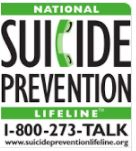
National Suicide Prevention Lifeline
HOTLINE 1- 800-273-TALK (8255)
Spanish HOTLINE 888-628-9454
TTY: 800-799-4TTY (4889)
Click here http://www.suicidepreventionlifeline.org to speak with a trained crisis counselor – or
Crisis Text Line
We can all help prevent suicide. The Lifeline provides 24/7, free and confidential support for people in distress, prevention and crisis resources for you or your loved ones, and best practices for professionals.
If you are a Veteran or service member with hearing loss, or any person concerned about someone who is, there are several ways to contact the Veterans Crisis Line:
- Text with a Veterans Crisis Line responder – Send a text message to 838255
- Online chat with a Veterans Crisis Line responder – Click here Suicide Prevention Chat: 24/7 Confidential Help – Veterans Crisis Line
- Homeless Veterans Chat: Suicide Prevention Help & Resources – Veterans Crisis Line
NATIONAL CALL CENTER FOR HOMELESS VETERANS – Call 1-877-4AID VET (1-877-424-3838)
TTY preferred relay or dial 711 then 1-800-273-8255
Free, Confidential Support for Homeless Veterans
Veterans who are homeless or at risk of homelessness can make the call to or chat online with the National Call Center for Homeless Veterans, where trained counselors are ready to talk confidentially 24 hours a day, 7 days a week.
The National Call Center for Homeless Veterans is also available by phone:
Call 1-877-4AID VET (1-877-424-3838)
The Veterans Crisis Line is also available by phone or text:
- Call 1-800-273-8255 and Press 1
- Text 838255
Who Can Call/Chat
- Veterans who are homeless or at risk of homelessness
- Family members, friends and supporters calling on behalf of Veterans
- VA Medical Centers and other VA facilities and staff
- Federal, state and local partners
- Community agencies and providers who serve Veterans who are homeless
Homeless Veterans Chat: Suicide Prevention Help & Resources – Veterans Crisis Line
SAMHSA’s National Helpline
1-800-662-HELP (4357)
Substance Abuse. Mental Health.
Find Help. Find Treatment.
SAMHSA – Substance Abuse and Mental Health Services Administration
DISASTER DISTRESS HELPLINE
1-800-985-5990 24/7
The Disaster Distress Helpline, 1-800-985-5990, is a 24/7, 365-day-a-year, national hotline dedicated to providing immediate crisis counseling for people who are experiencing emotional distress related to any natural or human-caused disaster. This toll-free, multilingual, and confidential crisis support service is available to all residents in the United States and its territories.
Stress, anxiety, and other depression-like symptoms are common reactions after a disaster.
Call or text 1-800-985-5990 to connect with a trained crisis counselor.
Alcohol, Tobacco & Other Drugs https://www.samhsa.gov/find-help/atod
Misusing alcohol, tobacco, and other drugs can have both immediate and long-term health effects.
Behavioral Health Treatment and Services https://www.samhsa.gov/find-help/treatment
Behavioral health treatments are ways of helping people with mental illnesses or substance use disorders. For example, counseling and more specialized psychotherapies seek to change behaviors, thoughts, emotions, and how people see and understand situations. Medications for mental and substance use disorders provide significant relief for many people and help manage symptoms to the point where people can use other strategies to pursue recovery. For many people, the most effective behavioral health approach involves a combination of counseling and medication. Early treatment is best. A trained professional should do a full evaluation to make the diagnosis. No single treatment works best. Treatments must address each person’s needs and symptoms.
Behavioral Health Treatment Locator https://findtreatment.samhsa.gov/
“Welcome to the Behavioral Health Treatment Services Locator, a confidential and anonymous source of information for persons seeking treatment facilities in the United States or U.S. Territories for substance use/addiction and/or mental health problems.
Disaster Distress Helpline https://www.samhsa.gov/find-help/disaster-distress-helpline
SAMHSA’s Disaster Distress Helpline provides 24/7, 365-day-a-year crisis counseling and support to people experiencing emotional distress related to natural or human-caused disasters.
The Disaster Distress Helpline, 1-800-985-5990, is a 24/7, 365-day-a-year, national hotline dedicated to providing immediate crisis counseling for people who are experiencing emotional distress related to any natural or human-caused disaster. This toll-free, multilingual, and confidential crisis support service is available to all residents in the United States and its territories. Stress, anxiety, and other depression-like symptoms are common reactions after a disaster. Call or text 1-800-985-5990 to connect with a trained crisis counselor.
Early Serious Mental Illness Treatment Locator https://www.samhsa.gov/esmi-treatment-locator Locator
What is SAMHSA’s National Helpline?
SAMHSA’s National Helpline, 1-800-662-HELP (4357), (also known as the Treatment Referral Routing Service) or TTY: 1-800-487-4889 is a confidential, free, 24-hour-a-day, 365-day-a-year, information service, in English and Spanish, for individuals and family members facing mental and/or substance use disorders. This service provides referrals to local treatment facilities, support groups, and community-based organizations. Callers can also order free publications and other information.
Also visit the online treatment locators.
What are the hours of operation?
The service is open 24/7, 365 days a year.
What languages are available?
English and Spanish are available if you select the option to speak with a national representative.
TREVOR Lifeline:
1-866-488-7386 (24/7)
“Founded in 1998 by the creators of the Academy Award®-winning short film TREVOR, The Trevor Project is the leading national organization providing crisis intervention and suicide prevention services to lesbian, gay, bisexual, transgender, queer & questioning (LGBTQ) young people under 25.”
Trevor Lifeline
Trevor Chat
Trevor Text
Trevor Space
Trevor Support Center
AVAILABLE at https://www.thetrevorproject.org
Additional Resources
- Advocates and Shelters | WomensLaw.org (drop-down menu for your State)
- Click here to enter your zip code: Find Domestic Violence and Abuse Help, Information and Stats (domesticshelters.org)
Domestic Violence Support | The National Domestic Violence Hotline (thehotline.org)
- National Organizations | WomensLaw.org (listed by subject matter)
- Chat Rooms and Message Boards | WomensLaw.org
- VictimConnect (serves victims of crime in US (including assault, abuse, domestic violence, teen dating violence, trafficking, stalking, etc.), and make local referrals.
Mental Health Resources
